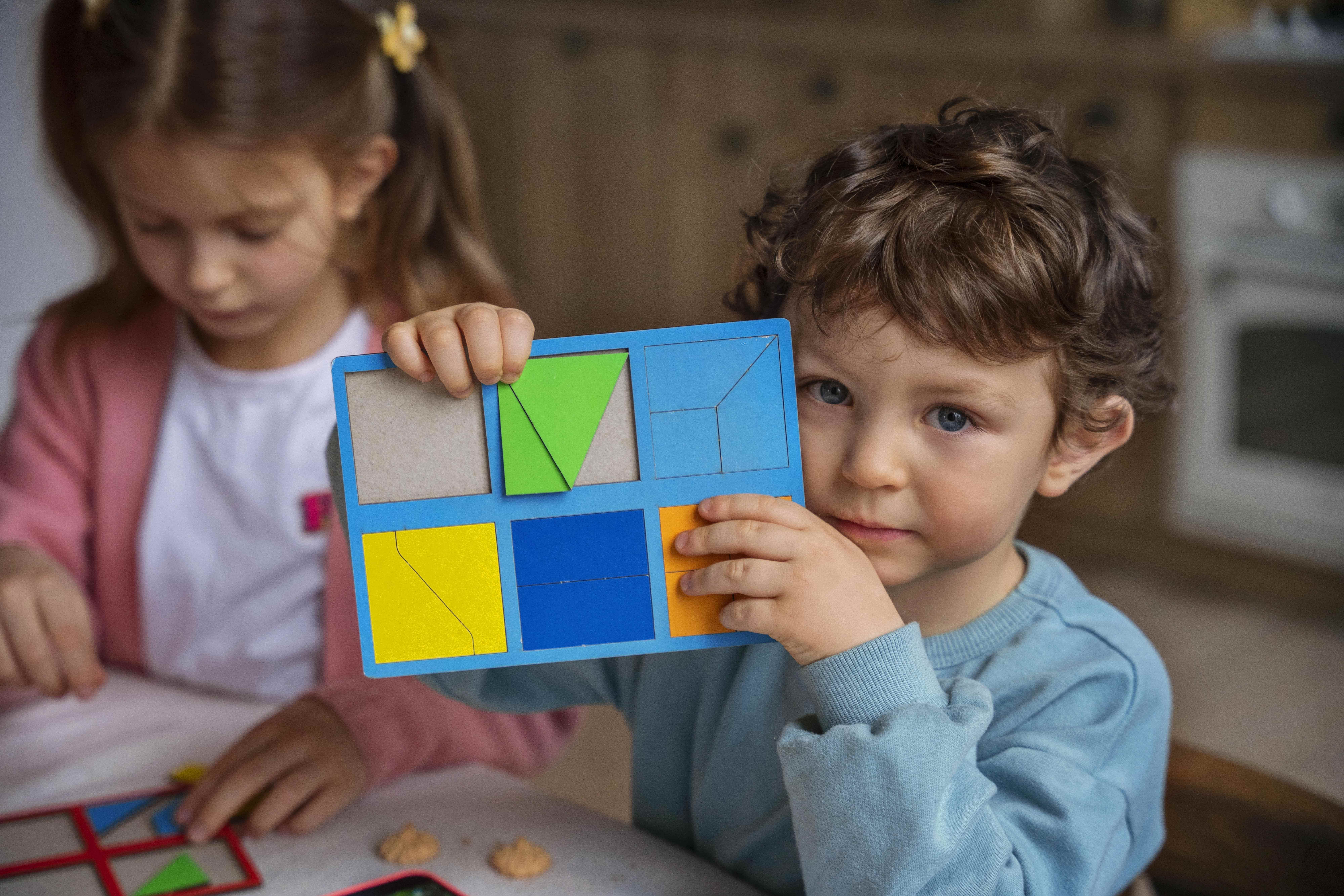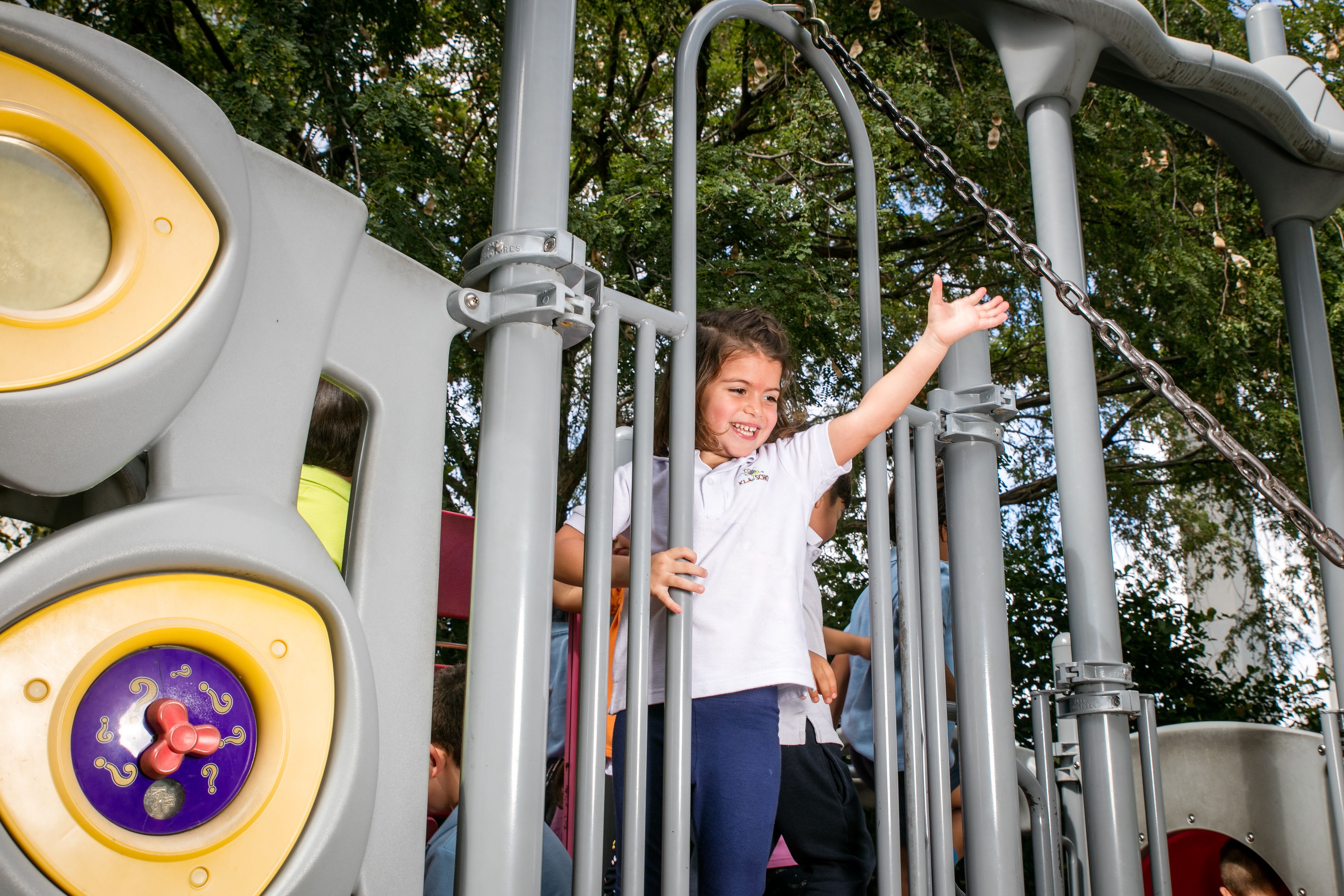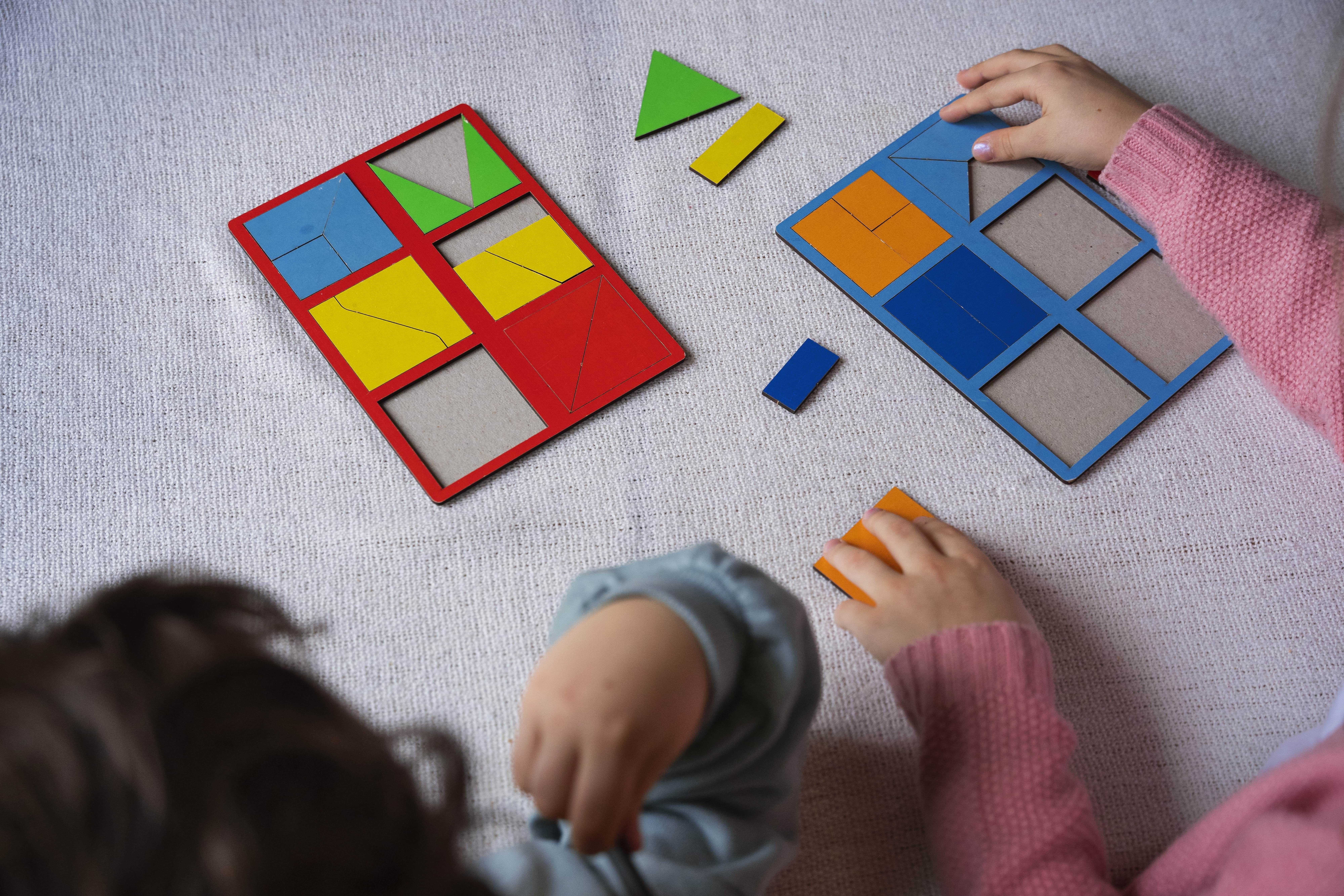Spatial Awareness for Preschoolers: Key to Daily Life Skills
Topics: Child Development
Age Range: Preschool
Inspired by the Reggio Emilia philosophy, KLA Schools fosters an environment where young children are empowered to explore, question, and grow. One crucial area of development during these early years is spatial awareness—a foundational skill that helps children confidently understand their surroundings and move through the world.
Whether it’s fitting a puzzle piece, walking around a table without bumping into it, or understanding personal space in social settings, spatial awareness for preschoolers lays the foundation for everyday functionality and academic readiness. Let’s explore what spatial awareness is in child development, why it’s essential, and how schools like KLA are helping children strengthen this critical life skill.
What Is Spatial Awareness in Child Development?
Spatial awareness refers to a child's understanding of objects and people in their environment. It involves recognizing position, direction, distance, and the relationships between different objects.
In child development, spatial awareness begins in infancy and becomes more refined in preschool as children gain control over their bodies and movement. By the time children reach preschool age, they begin to understand concepts like:
- Over, under, around, and through
- Near and far
- Left and right
- Inside and outside
- Above and below
These spatial concepts form the basis for critical cognitive, motor, and social skills. When discussing spatial awareness, we’re referring to physical coordination, language development, and the ability to solve problems in everyday environments.
Why Is Spatial Awareness Important for Preschoolers?
So, why is spatial awareness critical for preschoolers? The answer lies in how often we rely on it in daily life.
1. Physical Coordination and Safety
Preschoolers with strong spatial awareness are better at avoiding obstacles, navigating tight spaces, and managing their bodies. This can reduce accidents and help them participate more confidently in climbing, running, and dancing activities.
2. Cognitive Development
Spatial reasoning supports math and science understanding. Concepts like shapes, patterns, measurement, and geometry stem from an early awareness of space and spatial relationships.
3. Reading and Writing Readiness
Letter recognition, spacing between words, and tracking text from left to require spatial awareness. Children who understand positioning and direction often find it easier to develop early literacy skills.
4. Social Interaction
Personal space is a key part of social awareness. Preschoolers who understand boundaries are more successful at sharing, taking turns, and participating in group activities.
5. Problem-Solving
From stacking blocks to finding their way around a classroom, spatial awareness helps children plan, think critically, and adapt to challenges.
At KLA Schools, our educators know that supporting spatial development in early childhood can have lasting impacts across multiple growth domains.
Preschool Spatial Awareness Activities That Support Growth
Teachers and caregivers must provide daily opportunities for movement, exploration, and sensory engagement to foster spatial awareness in preschoolers. The following preschool spatial awareness activities are commonly used in our classrooms to build foundational skills in fun and natural ways.
1. Obstacle Courses
Simple indoor or outdoor courses that require crawling under tables, hopping over cushions, or weaving through cones help children practice navigating space while enhancing coordination.
2. Simon Says and Movement Games
Games that involve following directions like “touch your toes,” “reach above your head,” or “step to the left” help reinforce positional concepts and body awareness.
3. Shape Hunts
Searching the classroom or playground for shapes builds connections between geometry and real-life spatial reasoning.
4. Building and Stacking Activities
Blocks, magnetic tiles, and other construction toys teach children about balance, symmetry, and structure—core components of spatial thinking.
5. Mirror Play and Dance
Moving in front of mirrors or dancing with partners encourages awareness of personal space, movement flow, and self-expression.
These spatial awareness activities for preschoolers are seamlessly woven into KLA’s child-centered approach, allowing children to explore space through creativity and play.

Spatial Awareness Games for Preschoolers
While structured activities are helpful, sometimes the best learning happens during play. The following spatial awareness games for preschoolers are great for both home and school settings:
1. Red Light, Green Light
This classic movement game helps children learn how to control their bodies in space and stop or start based on visual cues.
2. Musical Chairs
Teaches children to judge distances and spaces while moving in rhythm with music.
3. Treasure Hunts
Hiding items and giving directional clues ("under the red table," "next to the bookshelf") helps develop listening and spatial vocabulary.
4. Puzzles and Tangrams
These problem-solving games require children to rotate, flip, and fit pieces—excellent for building visual-spatial intelligence.
5. Balloon Volleyball or Catch
Tracking a moving object while positioning the body builds hand-eye coordination and spatial precision.
KLA Schools integrates these games into indoor and outdoor play to make spatial learning fun, collaborative, and effective.
How KLA Schools Support Spatial Development
At KLA Schools, spatial awareness is not taught in isolation—it is nurtured through carefully designed environments and thoughtful interactions.
Classroom Design
Each learning class is intentionally arranged to allow freedom of movement, exploration, and interaction. Open floor plans, clearly defined areas, and visually stimulating materials invite children to navigate purposefully and safely.
Reggio Emilia Philosophy
Rooted in the belief that children learn through relationships and their environment, KLA Schools embraces a learning process that is both physical and cognitive. Teachers use observation and documentation to recognize how each child understands and engages with space.
Active Play and Sensory Exploration
Children constantly engage in real-world activities that build spatial understanding, from nature walks to sensory tables. Outdoor learning environments are especially valuable in helping children learn to judge distance, direction, and body positioning.
Emphasis on Language and Expression
Teachers model and reinforce spatial language—words like “between,” “below,” “near,” and “beside”—to help children express what they see and feel. This strengthens both communication skills and spatial cognition.
By embedding these practices into daily routines, KLA Schools ensures that every child can strengthen their spatial abilities in meaningful and developmentally appropriate ways.
Building Confidence Through Spatial Awareness
Spatial awareness for preschoolers is more than just a milestone—it’s a foundational skill that supports how children move through the world, interact with others, and approach new challenges. Preschoolers rely on spatial understanding daily, whether climbing stairs, solving puzzles, navigating a classroom, or sharing personal space.
At KLA Schools, this essential skill is nurtured through hands-on exploration, thoughtful classroom design, and a Reggio Emilia-inspired approach that empowers every child to grow in their way. By prioritizing spatial development, KLA helps children build the confidence, coordination, and critical thinking skills they need to succeed—now and for years to come.
Curious about how spatial awareness fits into your child’s early education?
Discover how KLA Schools creates joyful, purposeful learning experiences for preschoolers daily. Schedule a tour today!

